Moss is seen as one of the oldest plant species in the world! There are over 20,000 varieties of moss in existence. Typically, many people find the plant a nuisance in their garden as it can be encountered growing in unwanted places like between gaps on lawn and rocks.
How come the plant that is initially considered a nuisance is now sought after by many gardeners? Well, that is because the low-maintenance plant has a myriad of benefits.
Moss is used as a beautiful filler in floral arrangements and can also be used in decorating terrariums.
The low-maintenance plant also retains moisture in indoor and outdoor planters. In addition, the plant can serve as an excellent substitute for your lawn, especially if you're not keen on mowing your lawn always.
There are many types of moss plants like heath star moss, common haircap moss and mood moss. However, this post will outline some excellent moss plant types that will go beautifully well with your garden.
Table of Contents
What is Moss?
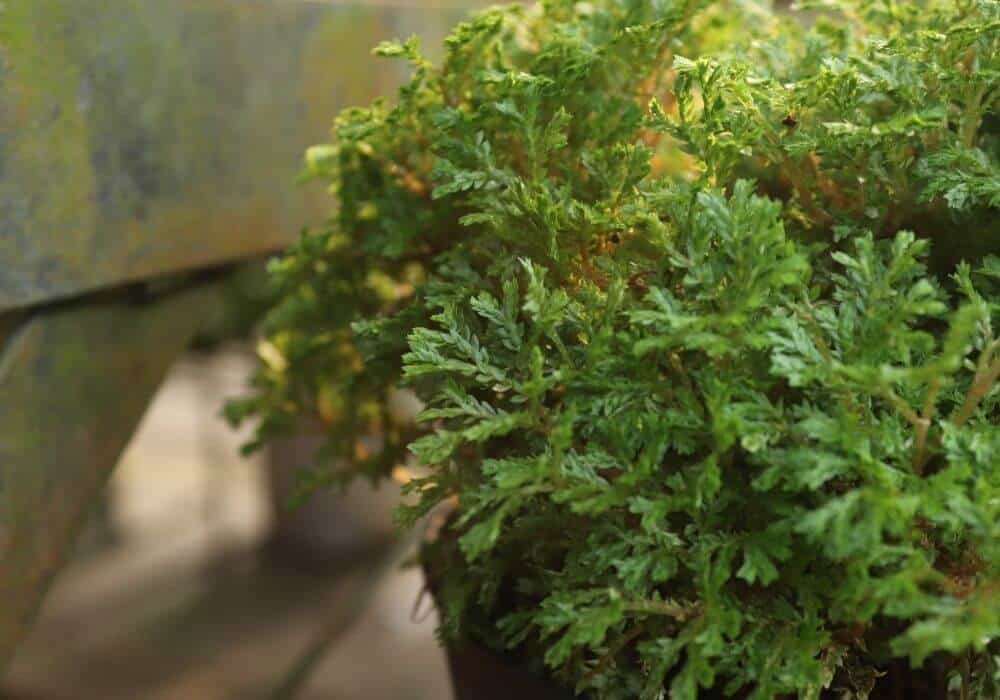
Moss is regarded as one of the oldest plants to emerge on land and has existed for over 540 million years! A typical Moss plant has no flowers or roots and mostly thrives in moist environments.
Moss is in the division Bryophyta which is a spore-producing nonvascular plant. Moss is referred to as a nonvascular plant because it has no roots and stays low on the ground as opposed to vascular plants that stay rigid and grow upright with roots.
Moss usually spreads via spores. Before now, moss was seen as a weed and a big nuisance! But with time, it was discovered the flowerless plant adds a unique beauty to gardens, flora arrangements, and lawns.
All mosses have similar features but with different growth habits – acrocarpous and pleurocarpous.
- Acrocarpous Moss: Acrocarpous mosses grow upright but don’t have branching stems. They look like miniature conifer trees with square-shaped leaves. The sporophytes, which are the spore-producing parts of moss, arise at the end of the stems.
- Pleurocarpous Moss: As oppose to Acrocarpous moss that can grow upright, Pleurocarpous mosses create dense mats on the ground. They have longer cells than acrocarpous moss, with sporophytes that rise from the side of the stem.
Types Of Moss
As mentioned earlier, there exist thousands of moss varieties. However, this post will center on top 15 types of moss plants that can add some greenery to your garden.
1. Common Haircap Moss (Polytrichum commune)
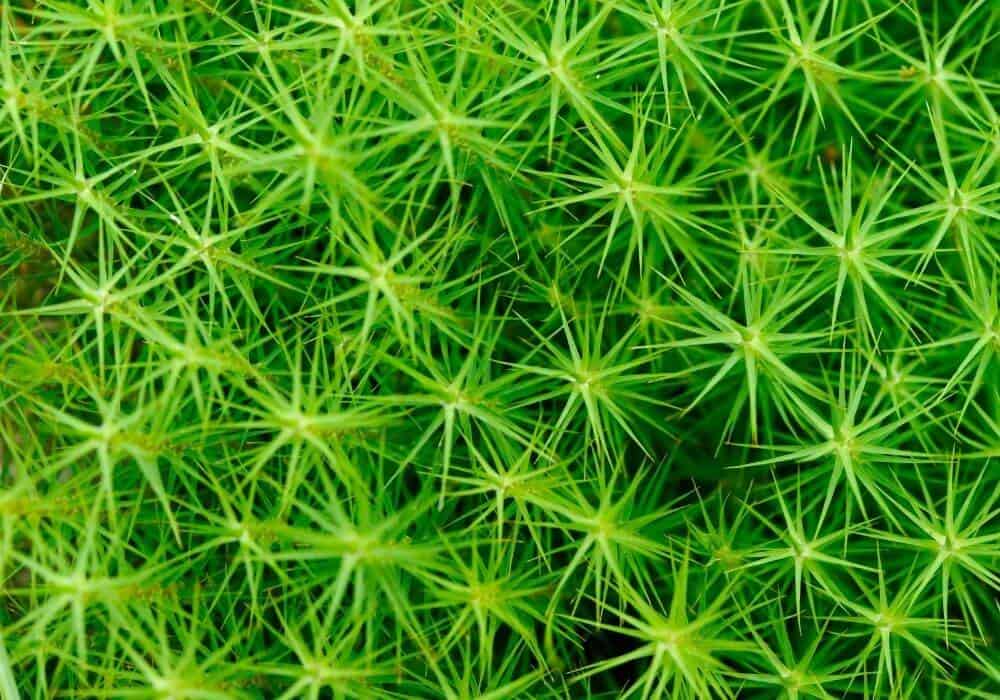
The scientific name for this moss is Polytrichum commune, and it's mostly usually found in the western hemisphere.
The moss can grow up to feet tall, which makes it the perfect moss for your lawn. The moss is tolerant to fertilizer and pollution.
The moss has long shoots of wiry spiked foliage with red-brown stems and pale to bright green leaves. From above, the common haircap moss looks like clusters of tiny stars.
2. American Tree Moss (Climacium Americanum)
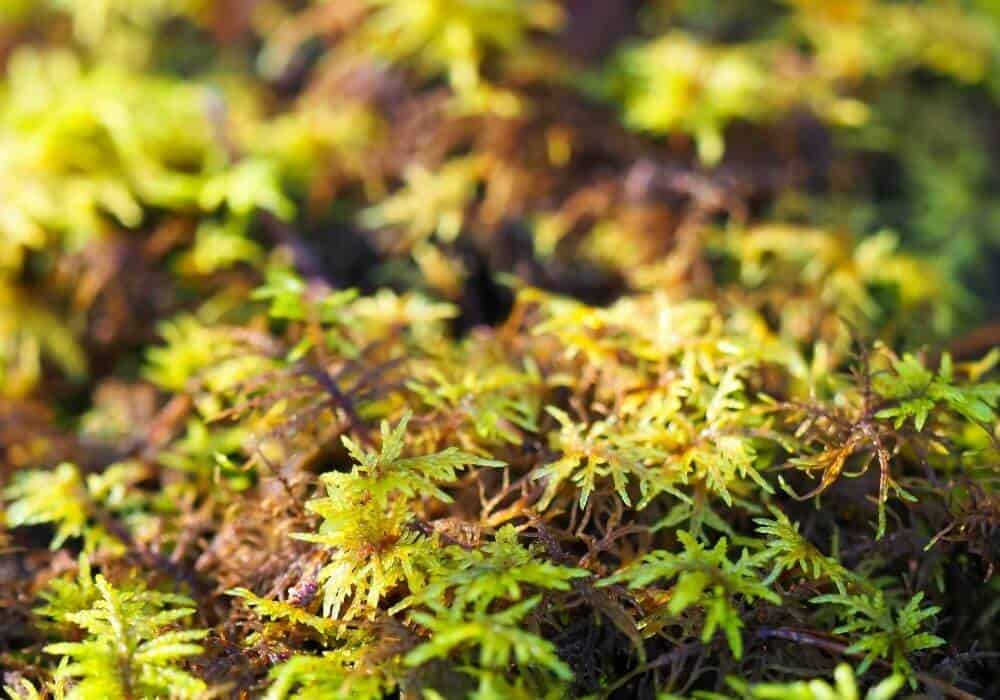
This moss has the scientific name Climacium Americanum, and it's found mainly in the eastern US and Canada.
This moss is known for its high tolerance level and can be found growing in woodlands, wetlands, swamps, and rocky soil.
The name American tree moss was probably adopted because the plant resembles small evergreen trees. When clumped together, they look like a miniature forest.
The American tree moss can grow up to four inches high and has pale green leaves that turn a dark olive-green color as the plant matures.
3. Mood Moss (Dicranum scoparium)

The scientific name for mood moss is Dicranum scoparium, and it's also commonly referred to as broom moss" or "broom fork moss."
The moss is originally native to North America and grows in Europe, Asia, Australia, and New Zealand.
The moss can grow up to 5 feet inches and looks like the perfect moss with its bright green color. Mood moss is partial to sunlight and may even get sunburned in areas with too much sun.
Thus, it is best to grow the plant in shady rock gardens. At the same time, the plant doesn't thrive well in soggy areas and should not be planted in extremely moist areas.
4. Shiny Seductive Moss (Entodon seductrix)
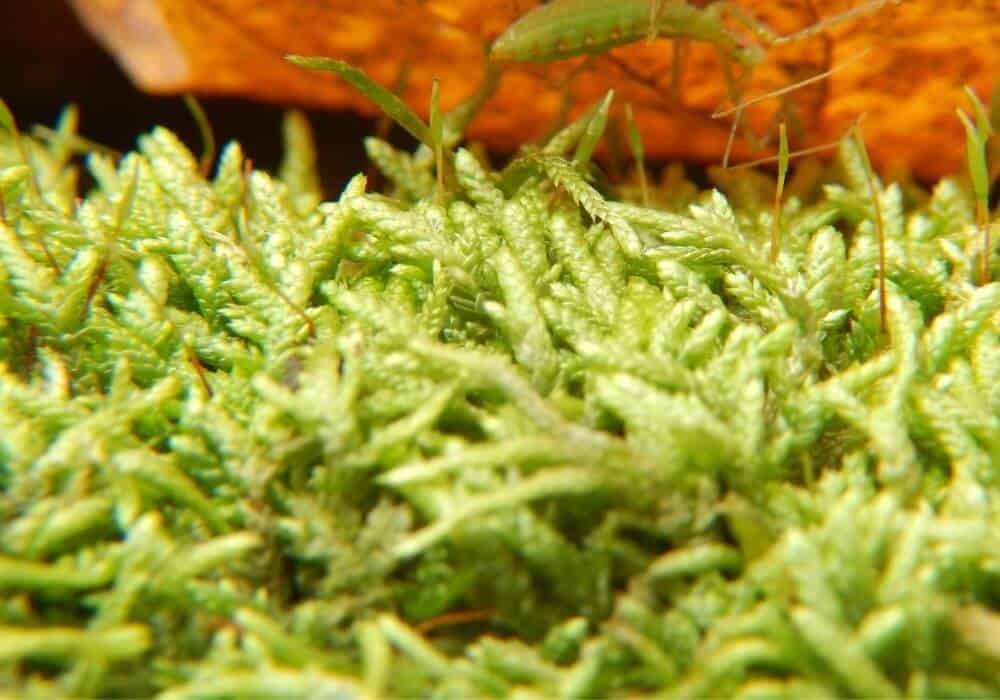
The scientific name for this moss is called Entodon seductrix, and its also commonly referred to as Shiny sexy moss.
The moss is native to North America and is frequently found growing in rotten wood, such as felled trees, old logs, and fence posts.
The moss can grow up to 5 feet inches and spreads rapidly, growing close to the ground. The moss is perfect for covering gaps between plants or in a rock garden with a bright and attractive base.
The moss enjoys full sun, unlike other varieties that thrive in moist environments.
5. Ribbed Bog Moss (Aulacomnium palustre)
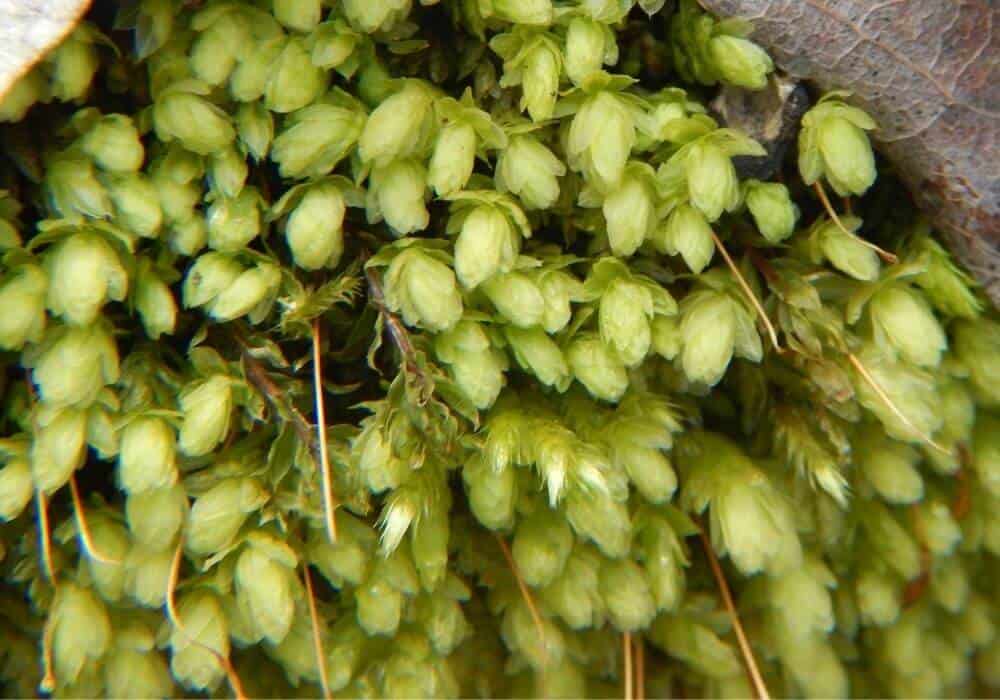
The scientific name for the ribbed bog moss is Aulacomnium palustre. This moss is popularly called "glow moss" because its yellow foliage glows in certain lighting.
The plant is native to Canada but can be found growing in all parts of the world because of its high tolerant rate.
The plant can grow up to 5 inches tall and form intricated tufts that resemble a matted carpet. The stalk of the ribbed bog moss is orange-brown with foliage of a yellow-green color.
The moss has a higher incidence rate, probably due to its high tolerant level, and thrives best in wetlands and boggy habitats.
6. Spoon-Leaved Moss (Bryandersonia illecebra)
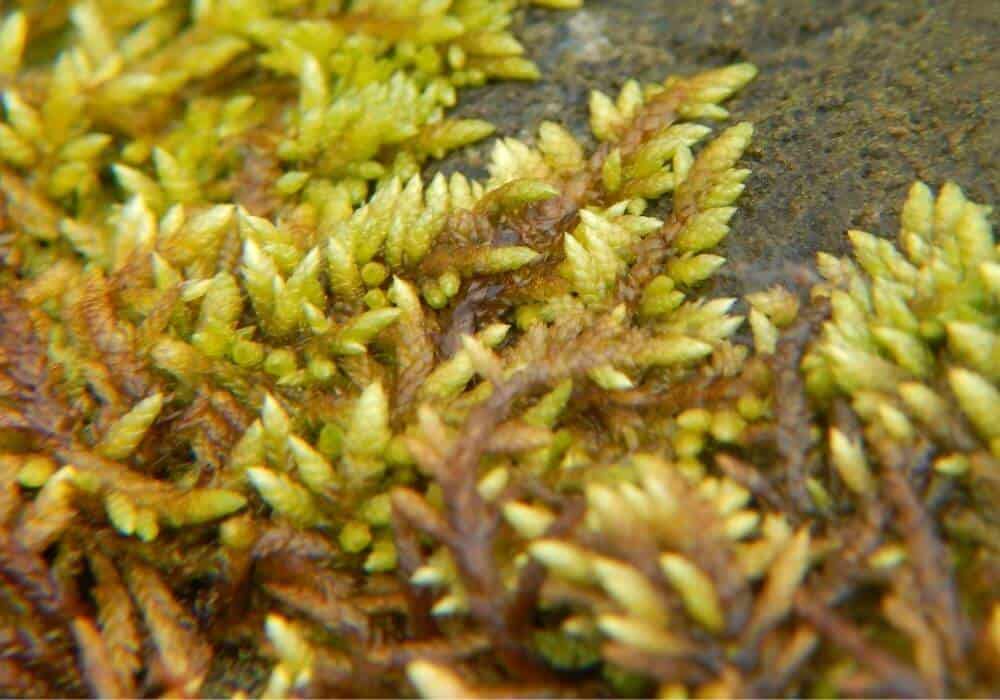
The spoon-leaved moss has the scientific name Bryandersonia illecebra and is commonly found in the US and Ontario.
In Canada, the moss is well valued and considered an imperiled species and thus protected under the federal Species at Risk Act.
The spoon-leaved moss thrives better in humus-rich soil and usually grows in seasonally wet areas. They are mostly found on rocks or tree bases.
This moss can grow up to 2 inches tall and usually spread by forming a dense blanket. This moss has overlapping leaves on the stem that gives it a juicy caterpillar effect.
When it's young, this moss variety has bright green leaves; as it matures, the leaves turn to a greenish yellow-brown color.
7. Heath Star Moss (Campylopus introflexus)

The scientific name of this moss is Campylopus introflexus, and its native to South America and widespread in the UK.
As the name suggests, the moss has a star-like appearance, and it's usually found growing on rotting wood, shingle, and thatched roofs.
The heath star moss is highly invasive and can grow up to 4 inches tall. The moss thrives best in moist, acidic soil and has dark red-brown stems and bright green foliage.
When young, the moss has bright green leaves, which gradually turn black as it matures.
8. Plume Moss (Ptilium crista-castrensis)

Plume moss has the scientific Name Ptilium crista-castrensis. The moss is commonly referred to as 'ostrich-plume feather moss,' probably because of its aesthetic appearance.
It is also called or 'knight plume moss' because the foilage resembles the feathers on a knight’s helmet. The plant is native to Canada and northern Europe, and it’s found growing in moist places.
Plume moss can grow up to 5 inches tall and thrives best in moist acidic soil. This moss grows rapidly by spreading, which results in dense mats of it covering large areas of forest ground.
It has a beautiful mid-green color with orange-colored stems. Due to the aesthetic appearance of plume moss, it is mostly used for decorative purposes.
9. Baby Tooth Moss (Plagiomnium cuspidatum)
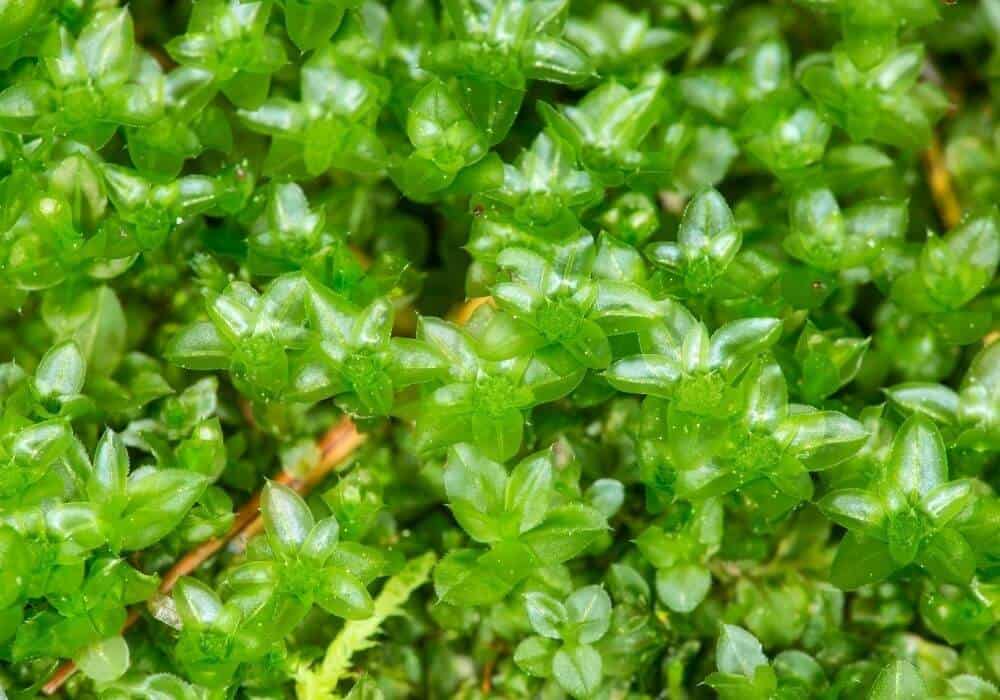
This moss has the scientific name Plagiomnium cuspidatum, and it's also known as "Woodsy Thyme-Moss" or "Toothed Plagiomnium Moss."
True to its name, the moss has sharply toothed leaves with a transparent and succulent appearance. The moss is commonly found in North America, Africa, and Asia.
Baby tooth moss can grow up to 1.5 inches under the ideal environment of indirect light and high temperature. This attribute makes the baby tooth moss suitable for bonsai and potted plants.
This moss has tall stalks that hover above its green foliage and slender brown-orange stalks. The baby tooth moss has a short life span and survives any soil condition.
10. Juniper Moss (Polytrichum juniperinum)
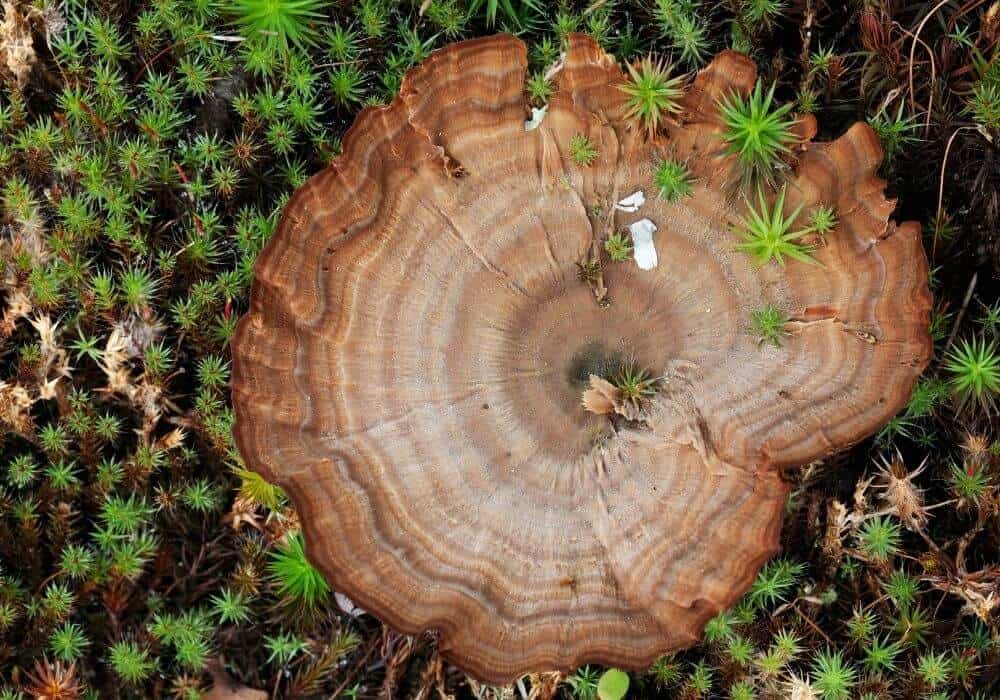
The scientific name for juniper moss is Polytrichum juniperinum. Unlike other mosses, juniper moss can be found growing on every continent, even Antarctica!
Juniper moss is also called "juniper haircap moss and is found growing in exposed locations like dry grasslands, forest footpaths, quarries, and gravel.
This moss can grow up to 5 inches. Unlike other moss types that thrive best in a moist environment, juniper moss prefers dry habitats.
It has reddish stems and gray-green leaves with brown tips that resemble spikes. This makes the moss looks a bit threatening and unfriendly.
11. Catherine’s Moss (Atrichum undulatum)
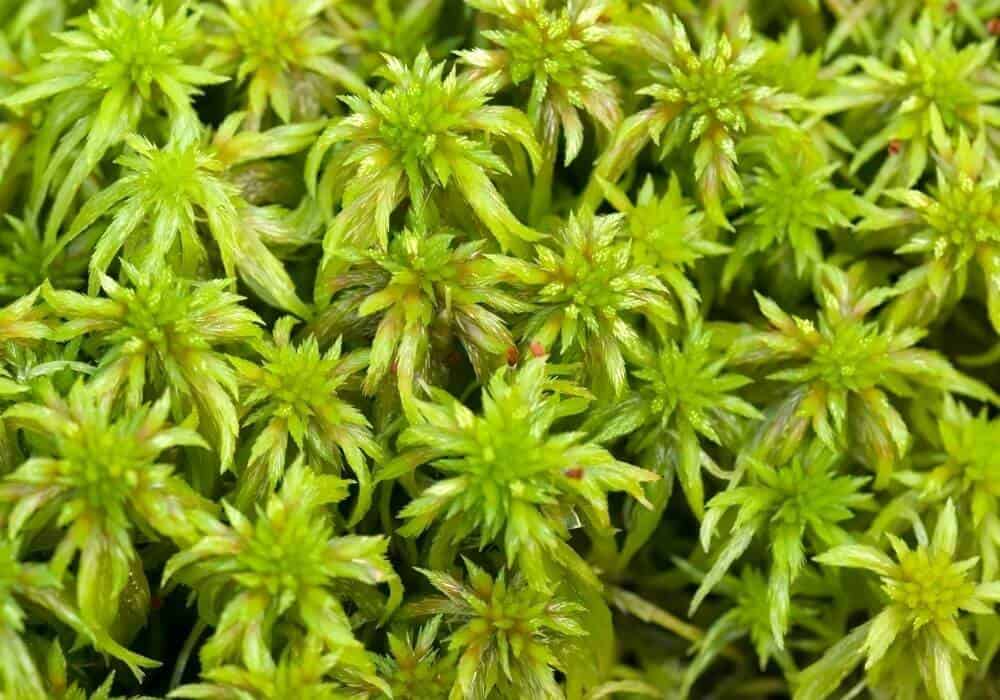
This moss has the scientific name Atrichum undulatum, and it's commonly called 'big star moss' probably because looking from above, its leaves spread out from the stem to give a wide, star shape appearance.
This moss is distributed across Europe, North America, and Japan, and it’s found growing on rocks and grasslands probably because of its high tolerance level.
The Catherine's moss can grow up to 3 inches and survives in any kind of soil, provided the soil drains rapidly. It has stiff bright green leaves and becomes crispy to the touch when left under the sun for a long time.
The Catherine moss prefers indirect sunlight or a shaded position but will still survive some exposure to sunlight.
12. Rigid Beard Moss (Didymodon rigidulus)
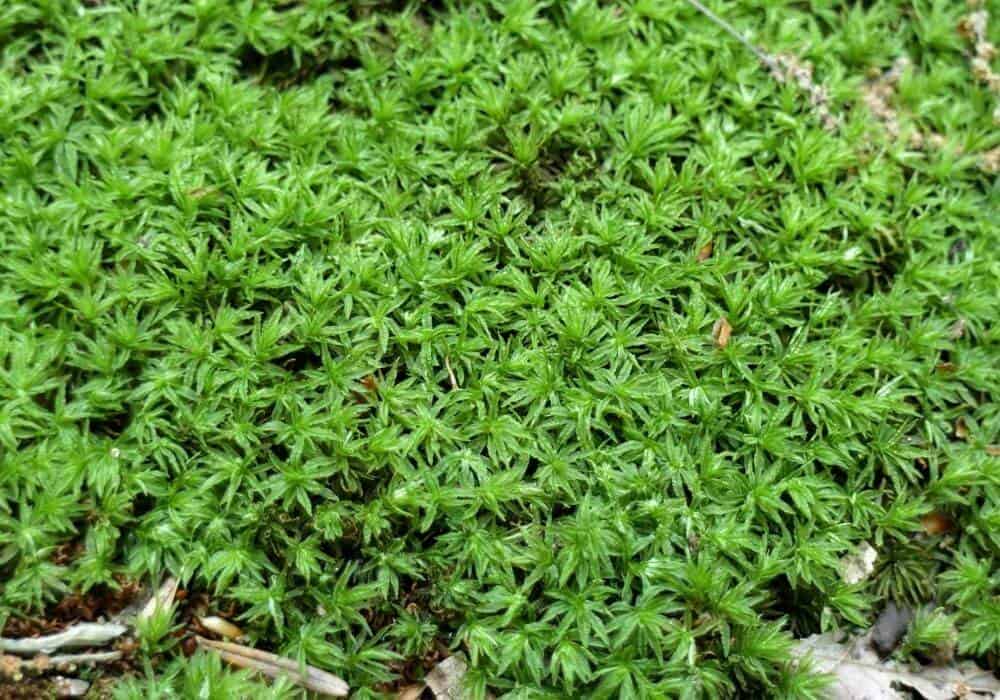
This moss has the scientific name Didymodon rigidulus, and it's the most common in the Didymodon species.
The Rigid Beard moss is native to North and South America and Europe. It is found mostly growing on rocks in alpine regions and grasslands.
This moss can grow up to one-third of an inch in dense tufts and spread out like a carpet. This dense-quality moss can thrive in any soil.
However, it prefers acidic soil under a partial shade with a moist environment. Its leaves are emerald green in color, and it is commonly found growing amongst gaps in concrete, paving slabs, rocks, and bricks in old walls.
13. Common Tamarisk Moss (Thuidium tamariscinum)
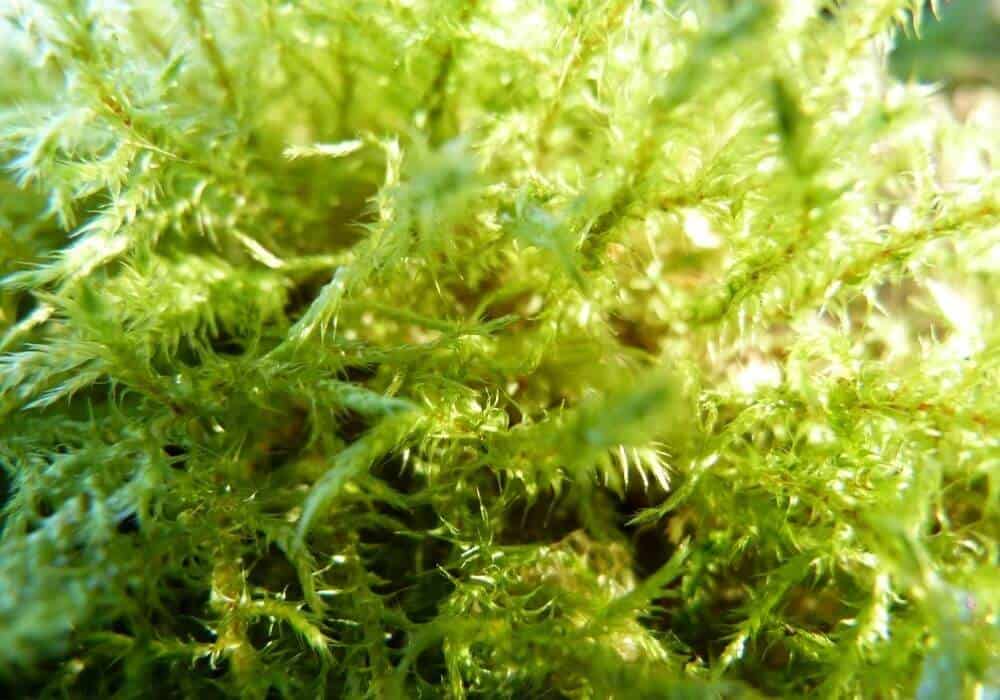
This moss has the scientific name Thuidium tamariscinum and is common in Europe and found in North America and Japan. This moss is usually found growing around rotting logs in dense tufts.
The Common tamarisk moss can grow up to 6 inches tall with bright yellow-green foliage that looks like a fern.
Unlike most types of moss that thrive best in acidic soil, the common tamarisk moss prefers neutral soil, primarily heavy clay soil.
14. Pincushion Moss (Leucobryum glaucum)
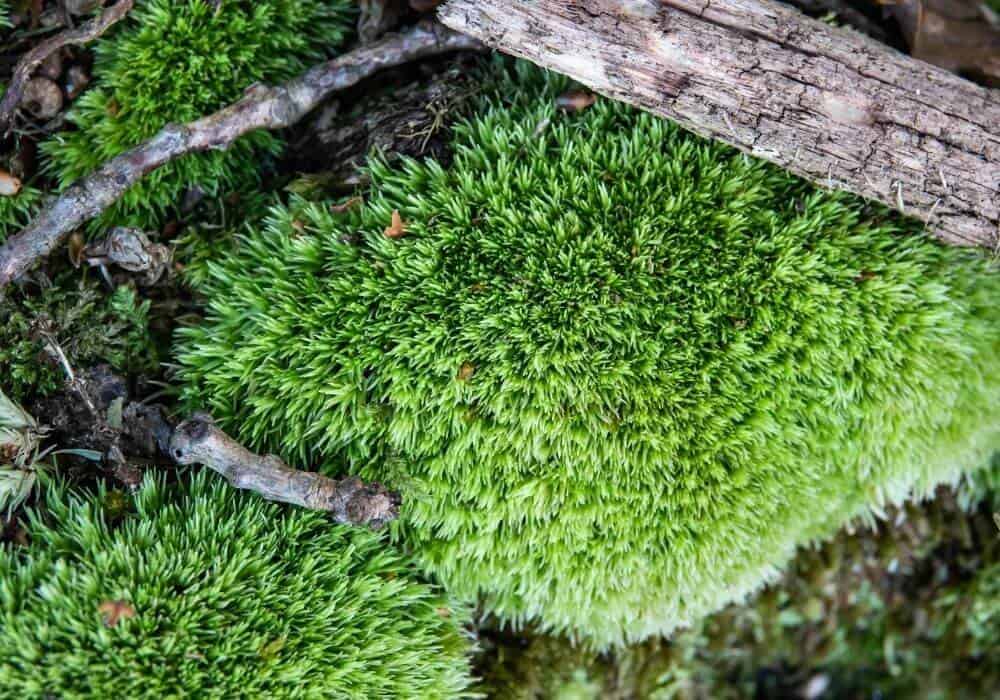
The scientific name for the pincushion moss is Leucobryum glaucum. This moss probably derived its common name because its mounds look like pincushions used for sewing.
They're widely found in eastern North America and Europe, growing in a moist environment.
The pincushion moss is a perennial plant that grows in the form of a large dome and can grow up to 5 inches tall and spread up to 20 inches in diameter.
The leaves of the pincushion moss are bluish-green and have a feathery, smooth feel to them.
This moss is highly tolerant and can survive prolonged periods of drought even though it prefers a moist environment.
The plant thrives best in acidic soil and spreads by spores in the wind, generally in autumn and winter.
15. Shaggy Moss (Rhytidiadelphus triquetrus)
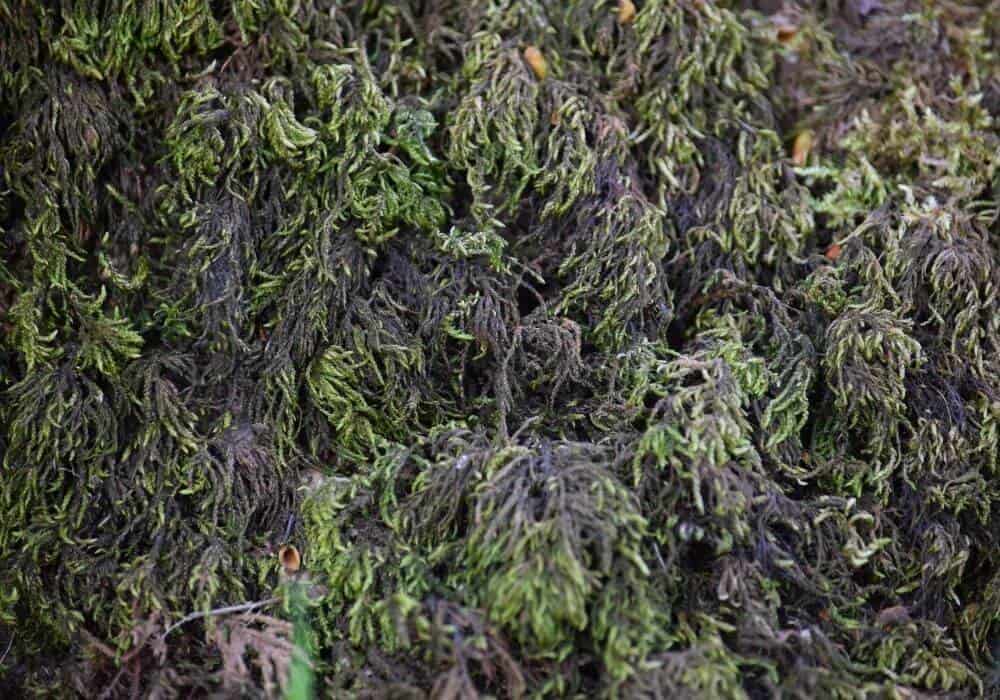
The scientific name is Rhytidiadelphus triquetrus. It is commonly referred to as 'electrified cat tail moss' or 'rough goose neck moss.'
The adjective 'shaggy' is befitting to this moss because it always has an unkempt, messy look to it.
This moss is native to Northern Hemisphere and the pacific Midwest, and it's mostly found growing along riverbanks and streams and on trees.
This moss can grow up to 4 inches tall with its long tail-like stems and fuzzy leaves when matured.
The pincushion moss has bright green foliage when young, which gradually changes to a brown hue as it matures. The fuzzy-like nature of its foliage makes it the perfect ground cover.
Conclusion
When it comes to types of moss, we realize that there thousand of moss varieties. This post, however, centers on moss varieties that can be grown in your garden.
The green, flowerless plant can add an extraordinary flair to your garden, not to mention that moss are low-maintenance plants that thrive independently.
If you wish to grow moss, you might need to research the ideal growing condition for the particular species of moss.
Related Articles:
- Different Types of Plants in the Ocean
- Succulent Plant Varieties
- Types Of Peperomia Plant
- Different Types Of Lilies
- Calathea Plant Varieties
- Lithops Plant Varieties




